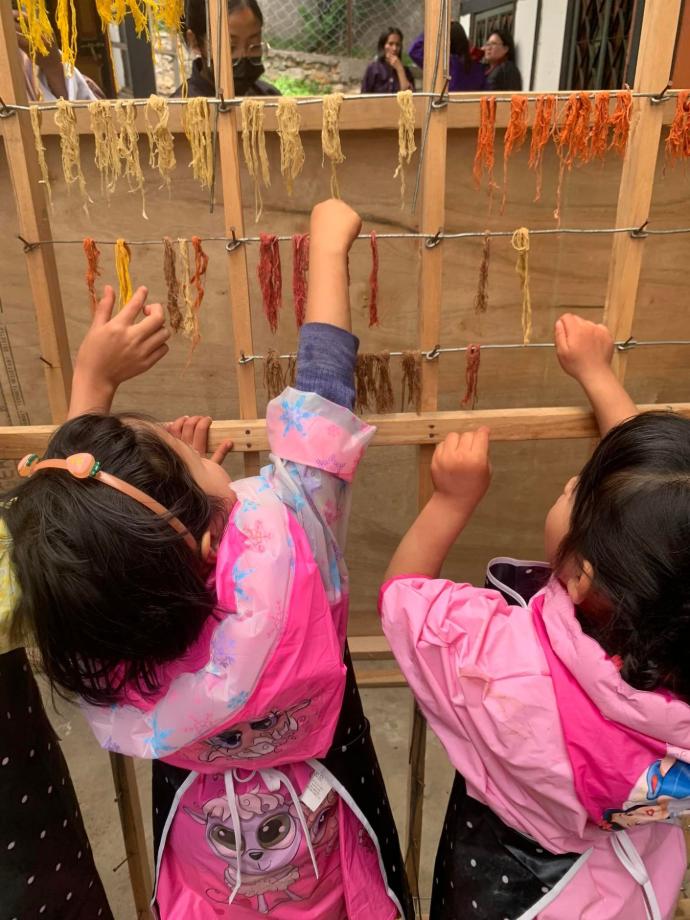3. Little Sparks of Nazhoen Pelri School at Green Weaving Centre

By Tshewang Choden Wangdi
The lessons are more than just about technique; they are an immersive exploration of history. The children are introduced to the fascinating stories of Bhutanese textiles—how the skills were passed from one generation to another, and how the vibrant patterns and colours of the fabrics tell the tales of our ancestors. They see how these textiles, once woven by hand in the homes of their forefathers, have evolved over the years, blending traditional method with contemporary innovations.
One of the most heartwarming moments came from a young boy who, after spending a day with the yarns, returned home excitedly sharing his newfound skills with his family. When his parents asked about his day, he told them, with shining eyes, that he would love to weave a gho—the traditional Bhutanese dress worn by men—for his grandfather, using the skills he had learned at the Centre. His enthusiasm was infectious, and his parents, who were equally curious about the art form, were deeply moved by his desire to keep this tradition alive.
This moment spoke volumes about the true impact of this educational program. The children are not just learning a craft; they are internalizing the values and importance of preserving Bhutanese heritage.
They are inspired by the idea that they too can contribute to the continuation of these age-old traditions, and in some cases, like the young boy, they are motivated to create something meaningful for their own families.
Today was another remarkable day at the Green Weaving Centre, where the spirit of Bhutanese textile art continues to live and breathe through the young hearts and hands of the students from Nazhoen Pelri School, located in the heart of Bhutan capital city.
With their lively curiosity and eagerness to learn, these children, who would otherwise have never been in contact with the rich world of fibres and natural dyes, are introduced to a tradition that has been passed down through generations.
and how these colours were once carefully extracted and applied to fabrics used by their ancestors. Through these activities, the children learn not just about the physical act of dyeing and weaving but also about the cultural significance of these practices in shaping Bhutan’s identity.
The yearly educational program, organized with support from the Green Weaving Centre, offers the students a unique opportunity to explore the ancient craft of weaving and the intricate art of dyeing. As part of the program, the children are given hands-on experience with various natural dyes and fibres. They are shown how different materials are sourced from nature, from plant-based dyes to insects and minerals